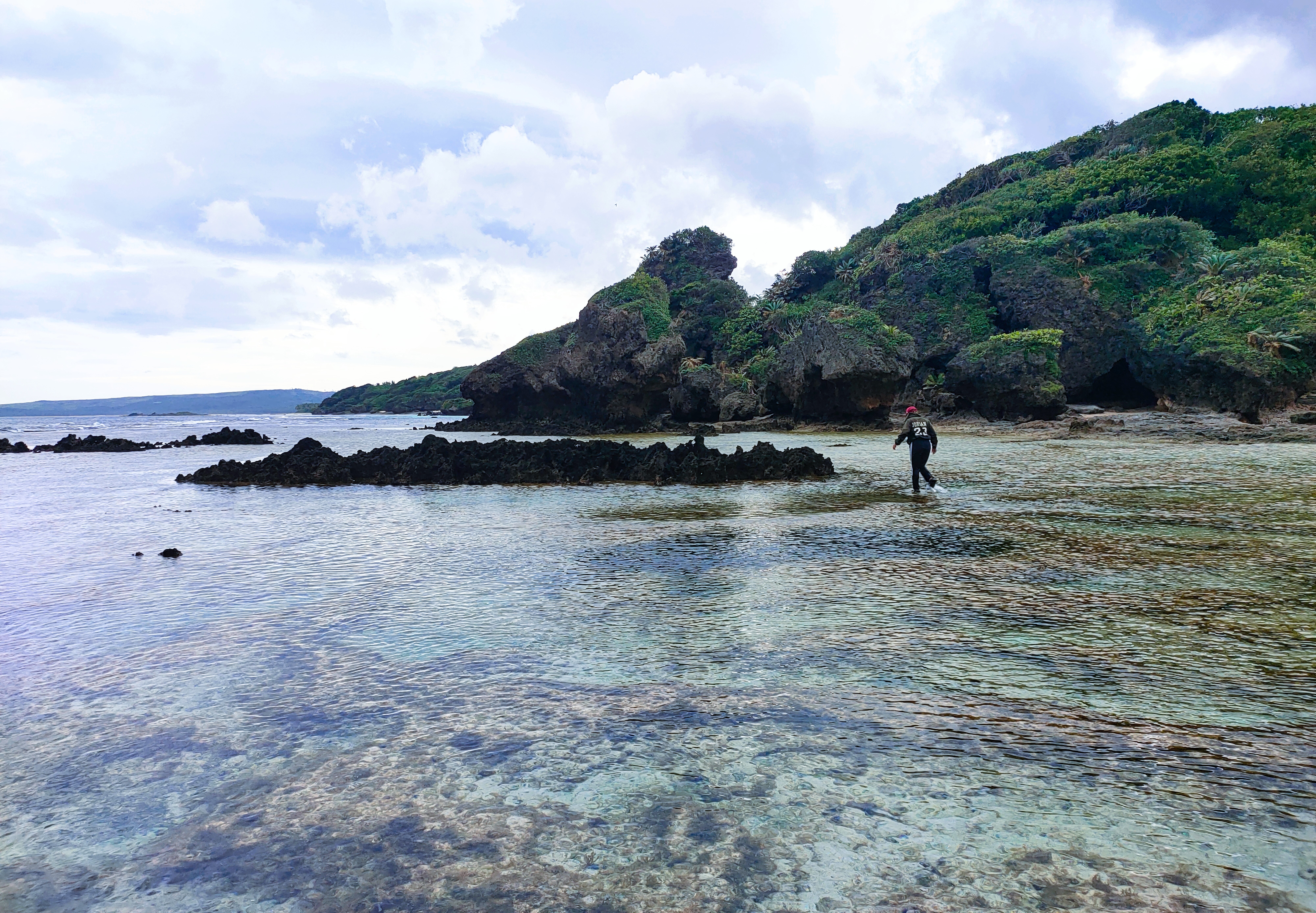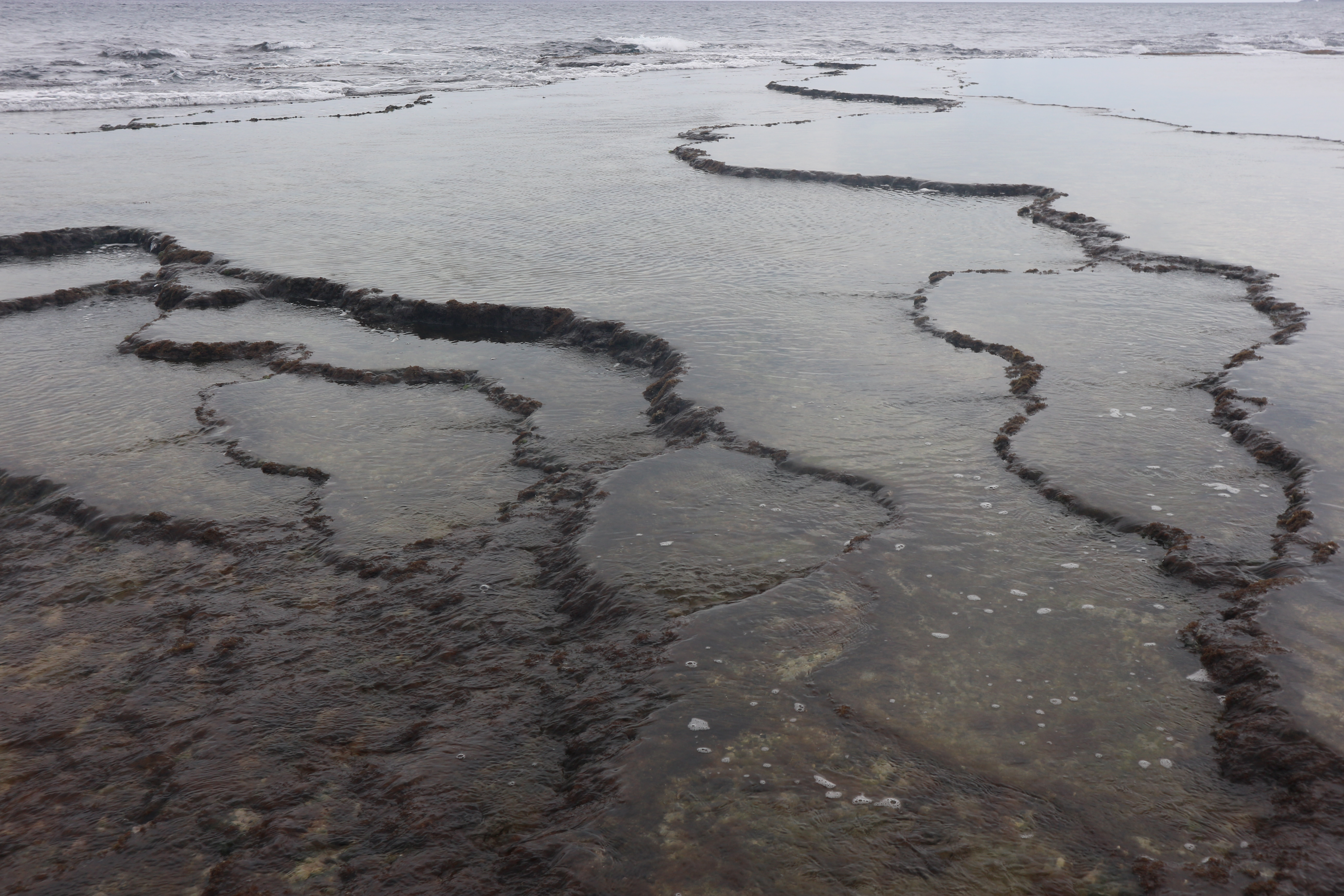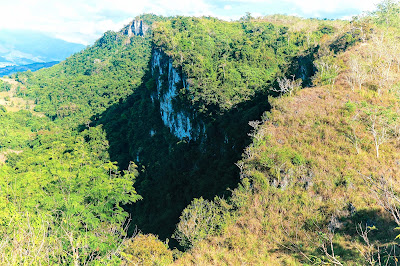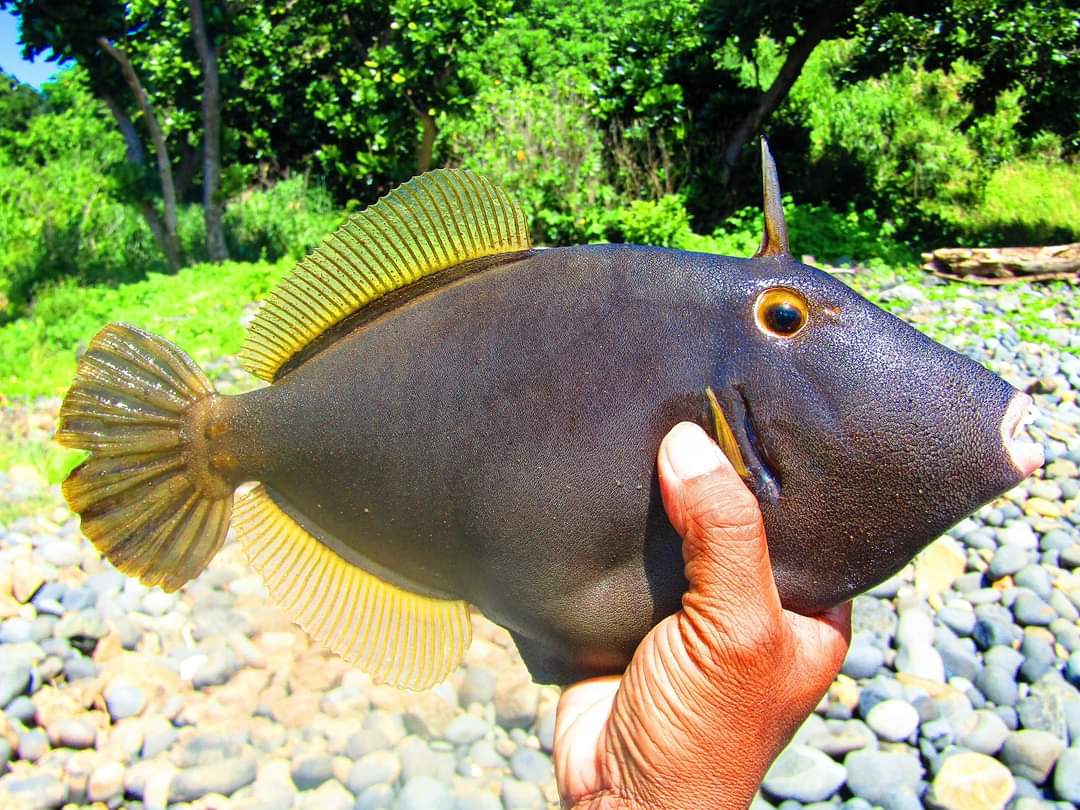"THE INCOMPREHENSIBLE BEAUTY OF DILAM, CALAYAN"
By Saniboy Pacursa
CALAYAN, CAGAYAN | A galaxy of islands spattered the Philippine territory straddling just above the equator where tropical climate zone rules nearly a third of the world's coastlines. Tropical wet season prevails here where the Philippines lies; where trade winds from north and south of the equator converge, creating a notorious barrage of typhoons. These rotating winds, often, but not always, follow familiar tracks. Typhoons moving westward from the Mariana Islands have often battered the country, rendering the Babuyan Group of Islands north of Luzon one of the most usually devastated.
Calayan Island is part of the Babuyan Group of Islands that also comprises the other major adjacent islands of Babuyan, Dalupiri, Camiguin and Fuga; all administratively under the jurisdiction of the island municipality of Calayan, except for Fuga which is politically controlled by Aparri.
One of the islands called Calayan is a cliché of a tropical paradise evoking a coastal realm that is barely attainable...
 |
| Sibang Cove, Calayan Island's most iconic spot |
But clearly, change has come to this once barely attainable paradise as Calayan now can be more conveniently accessible with the introduction of more stable ships and fast planes to supplement the often cumbersome, old-school rigger boats called "lampitaw".
Truly that every summer, tourism industry is now seeking Calayan's glass-clear waters, pristine white beaches and its grandiose land-seascape incomparable to anywhere else. But thrill-seekers mostly end up into the south-southeast portion of the island at Nagudungan Hills and Sibang Cove, though still both are the most iconic representations of Calayan's perplexing charm.
But Calayan is more than just the developed and well-known Sibang and Nagudungan...
 |
| A view of Nagudungan Hills from the sea |
In the far, wilder north of the island called Dilam, is a realm that offers an impressive, often contradictory variety of landscapes: boulder black and white beaches, dense forests and open grasslands, rocky coasts and hilly terrains, deep waters and shallow tidal flats.
Shifting my adventures to the more remote, I focused my sight to the coastal village of Dilam sequestered between the tropical rainforest vicinity of Mount Calayan, the island's loftiest and the ever-hostile Balintang Channel, north of the island. This massive body of water geographically unlinks Babuyan Group of Islands to the Batanes Group of Islands. I've got this journey to this dream land where time seemed to have stood still. Few outsiders have reached this paradisiacal place. Until just few years ago, Dilam was a silent, hardly known, sparsely populated spot where locals had a monopoly of the rich fishing grounds and stunning views of the wild shores and the white beaches and everyone was just worried about their immense catch. Very recently with the opening of Calayan Airport, there was an exodus of mass travelers especially during the peak of this summer and even though it has begun to open its ports to the hungry outsiders, Dilam remains somehow undisturbed, special and unique but beckoning every traveler with the enchantment of the remote, the barely attainable.
 |
| One of the many pristine white beach in Dilam |
Located on the peninsular northeast of Calayan, Dilam is the second largest barangay of this island municipality in terms of land area next only to Cabudadan but the former has the longest coastline among the seven barangays found on the island. Close to 2,000 people inhabit the village who constantly prowl the bounty of the sea for a living. I say it again, Dilam is still unknown to man but here is where most of the fresh catch of the island are sourced, eventually making their way to the Luzon mainland as far as Claveria, Aparri and Santa Ana, Cagayan.
For me, the excitement of Dilam would come to its wild coast dotted with massive rock formations and fine, coraline white beach alike, and its rolling, verdant pastoral beauty. But it would be as much in a medley of small delights that please my senses: the warmth of the welcoming Calayano or Calayana locals, the taste of an exotic island fruit called "sida-i", the scent of the morning sea breeze along the pristine shore, the unending barrage of surfs racing towards the tide line and the spectacle of people collecting myriad array of seafoods on the tidal flats and shallow reefs.
 |
| Tidal flats and shallow reefs rich in marine life |
My first venture was aimed at Bimmukel Hills, a vast expanse of rolling landscape in a carpet of verdant grasses strewn with rounded rocks and boulders. Grazing cattles and goats find refuge in the open fields and the potency of the air fresh from the sea creates fantasies of Batanes chronicles. Named so because of the perfect round hamburger hill that jutted out to the sea lapping its base.
The eastern portion of Dilam is a cape peninsula that forms a deep cliff projecting out to the Balintang Channel. The place called Batang, rises high from the beach where the perfect outline of Camiguin and Babuyan Islands are the scenes to behold. It requires an arduous up hike away from the Bimmukel Hills with the consolation of gasping each breath from the panorama of the spectacular entirety of the uninhabited, alien-like terrains of Dipari Island viewed on top. Arguably it was never visited by non-local tourists according to the guides but celebrities such as Yen Santos, Albert Martinez and other known politicians have landed at Batang through a helicopter.
 |
| The breath-taking view around the verdant Bimmukel Hills |
At the base of the peninsula is a confined forest thickened with the entangled mass of tropical vegetation. The locals named the woodland as Pimmutipot Forest because of the bizaare characteristic of the trees with twisting or wrung branches. The name was derived from the Iluko term "putipot" which means twist. We found plant species rarely or not found on the mainland Luzon thriving here such as the bandicoot berry, mangrove apple, almaciga, magallayaw, iron wood, callophyllum, sago palm and fauna of endemic species of tarantula and weevil.
We haven't found though the elusive avian Calayan rail known as piding, a strong indication of its decline, confinement and rarity.
 |
| One of the endemic species of plants found in Calayan |
Interestingly, all of the islands of Calayan are tagged by Haribon Foundation and Bird Life International as KBA or key biodiversity areas with outstanding universal value due to its geographic and biologic importance. Also, the islands have never been part of any large landmass, and thus possess unique flora and fauna, most of which are confined only to these islands.
My supposed travel to the volcanic island of Babuyan to witness the breaching of humpback whales and to purposefully summit the peak of Babuyan Claro Volcano was halted by the disturbance of weather patterns and thus, clearance from the Coast Guard didn't pursue. I found myself rather stranded in an island north of Dilam called Dipari.
The extreme weather and the unpredictable stance of the sea have robbed Dipari Island of some of its popularity but the enchantment on this uninhabited island remains as lovely as when the first sailors discovered this out-of-the-planet landscape. Masterworks of nature had sculpted giant mystifying sea stacks also called by the Calayanos as "kimmandela" or candle-like that still cast spells of beguilement to the rare spectators who come to visit them.
 |
| Several of the more than a dozen sea stacks in Dipari Island known locally as "kimmandela" or candle-like |
There are more than a dozen of these towering spires staggering at different sizes and half of those are about 30 meters high or more, the tallest could possibly reach nearly 100 meters.
These monuments serve as silent sentinels to the island located on its northern tip to which they directly face immense bodies of water called the Balintang and Bashi Channels, and to where the next major landmass to stumble is Taiwan.
You cannot find Dipari Island on the maps but instead, it is charted in Google Maps as Panuitan Island, still roughly 8 kilometers from the nearest point of Dilam, in Batang Peninsula. The water surrounding the island is hostile and constantly into unrest mode yet, it evokes the powerful aquamarine blue of aquarium seas that harbor benison of rich marine resources.
Dipari is as dangerous as it is alluring. Its waters are deep and its shores are rocky endlessly rammed by the raging surfs of the Pacific and South China Sea. Its domain reminds me of the volcanic islands of Hawaii and its stretch of white beach, the Waikiki. We feasted on various shellfish and seafoods as strange as the chiton and abolone we previously collected in Dipari's "kadilian" or tidal flats as our gastronomic palates mutated from ordinary to exotic.
 |
| Tidal flats made from coral beds rich in edible marine creatures |
True, much of this peculiar island remains immaculate out of reach for most tourists. Remoteness and weather remain primary defenses of this realm and it's not easy to imagine a resort on this island which has been called the wildest place in Calayan. But, though strongly defended by the weather and the sea, Dipari is slowly being attainable only by the intrepid; those who are in dire need of exploring the great outdoors, even though it took us three days to tame the sea before we could do our conquest.
My next stop was in Layag, a vast spread of pebble white beach with long and wide tidal flats and coral beds extensively teeming with crustaceans, molluscs, seaweeds and fishes. Cowrie shells, fan clams, myriad species of urchins, box crabs, sea slugs, and sea snakes to name a few and collect a handful of those edible ones for lunch is found enjoyable if you were to meet the low tide.
 |
| The massive boulders found on the Tagipuro Island just across the Layag Beach |
The so called Tagipuro Island just across the Layag Beach is actually an elevated tidal zone with a mini white beach spattered with gigantic boulders that have been incised into shapes by the wind and the sea in timeless confidence. It virtually transforms into an island during high tides since you could not see its connection into the Layag Beach.
 |
| The great white sands of Layag Beach |
Westward of Layag is the equally immaculate beach of Laton, a kilometric, uninterrupted expanse of white beach that extends into Dibay, the westernmost barangay of Calayan. Magnificent rock forms resembling the sphinx, flower vase, tables, spheres and countless irregularities cloak Laton's wild coastline that lend drama to its surroundings. Defenseless against the pounding waves, these massive coral rocks crumble overtime on the weathered coast that define the outline of Dilam. From end to end, Layag and Laton Beaches when combined forms an 11-mile long white beach and tidal flats, the longest of its kind in Calayan. Between Layag and Laton is the rustic, Kannaway Cave and beach enthralling with its bluish-green waters of crystal clearness quality. How such magnificent coastline evolved to such nature marvel is a complex story of geologic forces, of ocean currents and sculpting winds.
 |
| One of the countless rock formations near Layag Beach resembling the Egyptian sphinx |
Kannaway Cave is different from the sea cavern found in Magsidel, the Lussok Cave. The latter was formed from columnar basaltic rocks while the former was conceived from limestone rocks and coral upheavals. Both though without exception, they can be a haven for snorkelers and expert swimmers.
Kannaway Cave was named from the "kannaway" birds or herons that seek sanctuary on its crest, spires and shades; those resting from the long migration going southwards as far as Candaba Swamps in Pampanga.This richness, together with those found on its deep waters and rainforests had an immense value to the natural world and to the country's biodiversity and thus, some conservationist groups wanted it declared a National Park and be enlisted into UNESCO World Heritage Site list.
 |
| The spectacular view inside the Kannaway Cave |
Kannaway Cave and Beach is not for the faint-hearted, much more not for the novice for you're not dealing with an ordinary, walk-in-the-park beach or cave. You have to be exposed to the elements of the sea and fight with the tidal surges. It's no easy feat but if you do, consider yourself very lucky for you've conquered one of the splendors of Dilam whose beauty is beyond comprehension.
I might be sued if I fail to perfectly define and describe with contentment and satisfaction the medley of enchantments I discovered in Dilam. But I wanted to be clear; I have been so stupid for not getting to Dilam the first time I had my first glimpse of Calayan. All I thought the island's sheer beauty was not all beyond my comprehension but rather it was the irony.
 |
| The beauty of Dilam beyond usual comprehension |
Remembering the previous story when I wrote how the angels saw Calayan in their flight, I presumed it's possibly that they passed over Dilam too because there, scenes so lovely and wonderful these angels must have been gazed upon it on their flight in heavens - with their breaths taken away to that incomprehensible beauty of Dilam they saw first before I did.
#CalayanCagayan #VisitCagayanPH #EndlessFunCagayan #DilamCalayan #Cagayan #CagayanProvince #ExploreCagayan ##ExploreDilam #IslandLife #IntoTheWildSeries#TworismoSaLambak #YourIslandsAndValleyOfFun






































